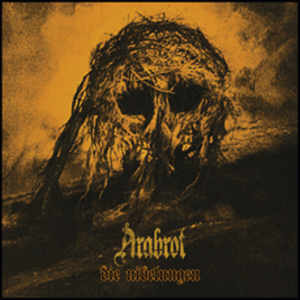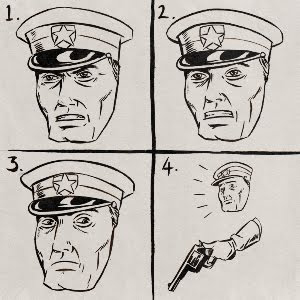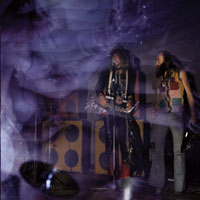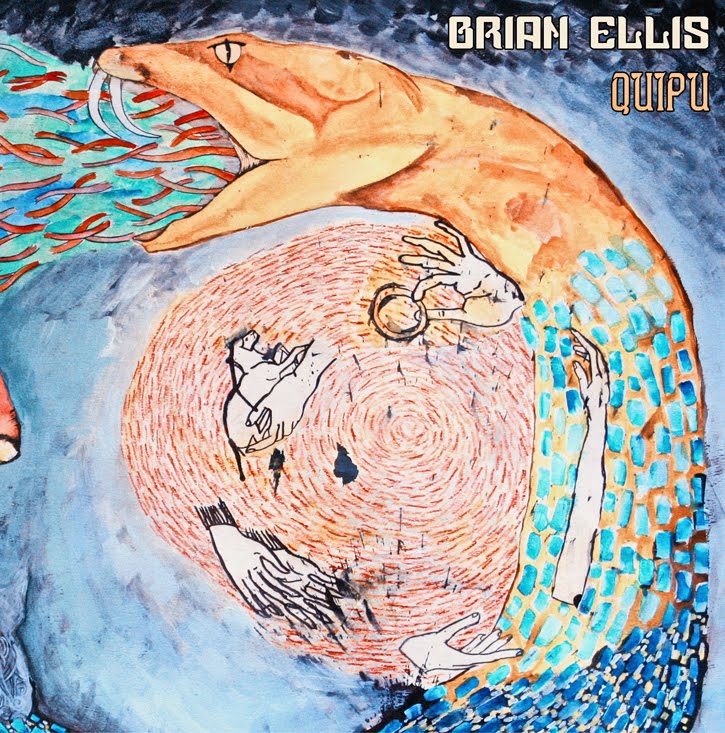Pelagic
 Suitably sepia-soaked, part one of Årabrot Speciale‘s Die Nibelungen stares off into the mysterious distance, its choral eddies peripherally chased in phosphorescent shivers. A discordia of wormy animates vapourising on an imagined horizon as malevolent motifs creep the architecture. Signatures that crystallize, dance skeletal, then are snatched away by this trembling expectation — breathy exhales followed into celestial convolutions and pitch-shifted rubs, delirious ecstatics that paint the surrounding darkness in brief fleshy glimpses.
Suitably sepia-soaked, part one of Årabrot Speciale‘s Die Nibelungen stares off into the mysterious distance, its choral eddies peripherally chased in phosphorescent shivers. A discordia of wormy animates vapourising on an imagined horizon as malevolent motifs creep the architecture. Signatures that crystallize, dance skeletal, then are snatched away by this trembling expectation — breathy exhales followed into celestial convolutions and pitch-shifted rubs, delirious ecstatics that paint the surrounding darkness in brief fleshy glimpses.
This artefact was recorded live in Norway back in 2016,
Årabrot‘s
Kjetil Nernes recruiting
AP Macarte of
Gnod,
Andrew Liles,
Karin Park and
Ane Marthe Sørlien Hole to his ranks. I would have loved to be in the audience for this one, especially when that plodding ridge of riff eats in there. Its velvety and carnivorous nature is reminiscent of
SunnO))), then
choral-cantered, wrapped in rough kinetic tendrils that seem to cling to an unfolding narrative as the focus shifts to reveal a lullaby, beset in chaffing debris and wordless whirring. The studio quality of its unfolding branches weaving wickedly through a questioning perdition, languishing in a labyrinth of intent that keeps you curving to its sharking exposures. A verdigris of bristling reflections that fall though into an unexpectedly sweet sedition of blurry trumpeted twilights.
If I hadn’t already seen
Fritz Lang’s
Die Nibelungen, the ornate dynamics here would make me want to address that. The melodrama of the faces, the film’s scenic awesomeness spidering out of the sonics. That all-essential twist of light and dark dribbling all over. The quiet, saliva-sipped ferrics of side two
channelled into the ghostly boom of percussion to skating tangents, spectrum-splattered in hissy aerosol. That rim-licked stick work and the vivid cranking of cogs adding to a gathering momentum, spinning out on tasty dynamics. Thematics that excite slowly slipped into an ambient wash of the first side, remixed into a vaporous fog and orc(ing) orchestrations. The trumpet/flute work is snaky with eerie operatics and those scary exhales that concubined your consciousness on the first side to Theremin thermals.
That blunted corolla of glittery metallics harrows a sinister-soaked incantation (of the type that haunted Berberian Sound Studio). A stammering hex set in wobbly distortions and elephantine screams. The tapering space slowly swamped in heavy riffery, nurturing an explosive conclusion. Smashed glass and machine-gun fire rattling the speakers, that riff returning twice as loud to splattering wood and the thrown-up earth (First World War newsreel stylee). The walkie-talkie warpage and massive choral sweeps giving you “Penetralia”-like highs, to nosedive into a jewel-splattered termination. A re-inventive delve into deep waters, Årabrot may have scored a lot of silent classics, but this one lives within and beyond its inspiration.
-Michael Rodham-Heaps-
 Suitably sepia-soaked, part one of Årabrot Speciale‘s Die Nibelungen stares off into the mysterious distance, its choral eddies peripherally chased in phosphorescent shivers. A discordia of wormy animates vapourising on an imagined horizon as malevolent motifs creep the architecture. Signatures that crystallize, dance skeletal, then are snatched away by this trembling expectation — breathy exhales followed into celestial convolutions and pitch-shifted rubs, delirious ecstatics that paint the surrounding darkness in brief fleshy glimpses.
Suitably sepia-soaked, part one of Årabrot Speciale‘s Die Nibelungen stares off into the mysterious distance, its choral eddies peripherally chased in phosphorescent shivers. A discordia of wormy animates vapourising on an imagined horizon as malevolent motifs creep the architecture. Signatures that crystallize, dance skeletal, then are snatched away by this trembling expectation — breathy exhales followed into celestial convolutions and pitch-shifted rubs, delirious ecstatics that paint the surrounding darkness in brief fleshy glimpses.


